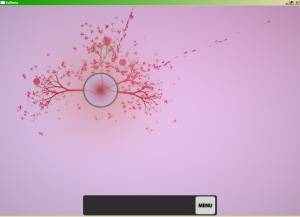WoW: More Dungeons
I’m writing this a day late. Saturday, I pretty much spent all day taking Oleari through quests and dungeons. I respecced her a bit, changing her Shaman specialization from Enhancement to Restoration, for the specific purpose of making her more party-oriented — I had chosen Enhancement for the same reason initially, thinking that specializing in buffs would be similarly useful to others, but it turns out that Enhancement mainly means enhancing yourself. Self-buffs are always a troubling bit of design. If a spellcaster can spell himself up into a more powerful fighter than a warrior-type, why bother having warrior-types? And if he can’t, why not just roll up a warrior instead of bothering with the self-buffs? There has to be some kind of tradeoff for it to make sense. Well, the WoW Enhancement Shaman has at least the disadvantage that you have to take the time to cast your enhancement spells, and most likely drop a totem or two as well, which I suppose means a dedicated warrior would be able to respond to a sneak attack better. But this is all speculation from someone who hasn’t even hit level 30 yet.
I’ve been through all of the dungeons that were initially available in the Dungeon Finder (more are added as you level up), and while the experience has been mostly more pleasant than my first stupid dungeon, there’s one aspect of that first attempt that I haven’t been able to shake: doing a dungeon properly usually takes me two tries. Usually there’s some in-dungeon quest goal that I miss the first time through — some gathering-quest that I don’t pursue adequately until it’s too late, or some quest-giver who I didn’t notice until after the boss he wants me to beat is already beaten. Everyone else seems to already know the basic dungeons by heart, which means that they’re off and away before I get a chance to read the quest descriptions fully — particularly when the tank (who takes point, and thus sets the pace) is a Warrior, because they have a motivation to rush from one encounter to the next before their Rage meter empties. Maybe next time I should research the dungeons in advance.
The only dungeon that I completed in only one sally was the Wailing Caverns. There was some kind of dream-god in the form of a giant snake in there, or something like that. I couldn’t tell you the details. I’m sure it was all very important to the quest-givers, but again, I was too busy trying to keep up with the party. It went pretty smoothly: I managed to keep people healed, and everyone agreed in the end that it had been a good team. But after the last boss, when people started leaving, I still needed to pick flowers. That was a side-quest within the dungeon: some herbalist or something wants samples of a rare flower called Serpentblossom that only grows in that dungeon. For most of the run, I kept seeing it reported in the message window that various other people had found them, but I wasn’t seeing any myself, mainly because I didn’t know what to look for. So after the end, I was faced with the task of scouring the dungeon for flowers alone. Except that I wasn’t alone: one other member of the party was in the same situation, and we helped each other search, chatting a bit as we did so — he gave me some help with the less-obvious parts of the interface. This was a lot more like the kind of party experience I had come to Azeroth expecting than the frantic slaughter-race that’s turning out to be the norm.
I did take Oleari through Shadowfang Keep, even though I had already conquered it with Pleasance. I didn’t finish it this time. The end boss, one Lord Godfrey, seems to be particularly tough. Pleasance’s team had difficulties with him as well, I recall. Every once in a while, he performs an attack called Pistol Barrage that can easily take out most of the party, if they haven’t taken cover. Fortunately, you get warning when he’s about to use it, but as the party healer, taking cover means losing my line of sight on the tank, and thus, for a little while, my ability to cast healing spells on him. Perhaps the tank should have sought cover as well? Does Godfrey stand still or something when he’s preparing a Pistol Barrage to give you that opportunity? Regardless, I was blamed. Keeping the tank alive is the healer’s job, so if the tank dies, it’s the healer’s fault. There were exasperated cries of “wtf shammy” and intelligence-belittling exhortations to just stand there and heal him, as if I had been doing anything else. Before quitting the party, the tank instructed me to delete the character and start over with a new one. So, yeah, not as pleasant an experience as Wailing Caverns. I wonder how much this is due to the party, and how much due to Shadowfang Keep being a morale-breaker?
One thing about the Godfrey debacle worthy of special note: at one point, someone asked something about the healbot I was using, and /facepalmed when I revealed that I wasn’t using one. Are bots simply expected in WoW? It would explain a thing or two about everyone else’s behavior. It probably doesn’t seem like you’re taking things particularly fast when the computer is performing most of your actions for you. But if this is the case, it’s a big change from my Everquest days. Bots were considered a form of cheating back then; they might even have been a bannable offense. Cheating or not, I can’t say I see much point in playing a game without, y’know, playing it. But then, a lot of people clearly feel otherwise — otherwise, the infamous Chinese gold farms would never see a profit.
 Comments(7)
Comments(7)